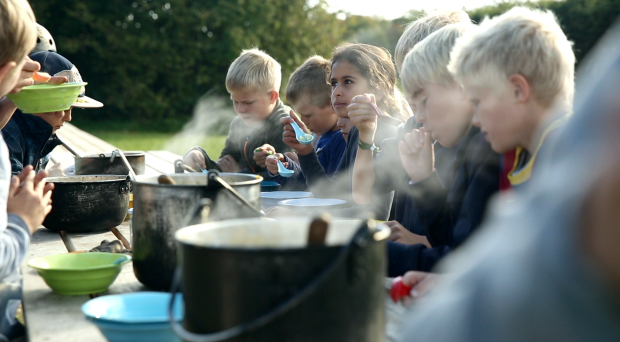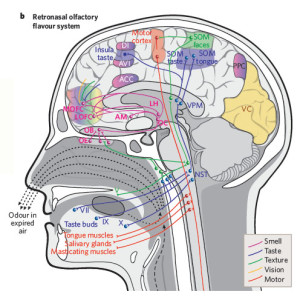
Ole G. Mouritsen is guest editor of a special series of articles that appear in the open access journal Flavour. In this blog post, he discusses how the sense of taste has been sidelined, and why further interdisciplinary research could bring more benefits than we realise.
The consequences of malnutrition, and critical unbalances in the diet with regard to fatty acids, sugar and salt, are becoming more and more manifest in the Western world.
We’re currently witnessing a rapid increase in diet- and lifestyle-related non-communicable diseases, such as heart and coronary diseases, obesity, diabetes, hypertension, cancer, as well as certain mental diseases.
Paradoxically, in many developing countries we see recurrent incidences of hunger catastrophes and malnutrition, but at the same time also witness a virtual upsurge of the same diet-related life-style diseases that are pestering the Western world.
According to the World Health Organization’s constitution, the health of a population is not only a condition set by the absence of illness but also determined by the ‘Quality of Life’ (QOL). Many countries have a growing population of individuals, including elderly citizens, who have a diminished QOL as they go through complicated hospitalization and medical treatments.
Their QOL often suffers due to lack of appetite, leading to malnutrition and secondary diseases such as gastric malfunctioning, anorexia and a number of other physiological dysfunctions.

Appetite, choice and acceptance of food, the amount of food consumed, as well as the satiety and satisfaction after a meal, are key factors that are likely to influence people’s QOL, and are intimately linked to the sensory perception of food. Food flavour, including taste, smell, mouthfeel, and sensation, all have influence on the amount of food taken in and the degree of satiety. The palatability of the food is therefore an important factor.
Still, official dietary recommendations and guidelines seldom give much attention to food palatability. A well-known example is the recommendation of 600 grams of vegetables and greens per day which most people have problems with, presumably because of lack of palatability and taste.
As a consequence, people eat considerably fewer vegetables or flavour their vegetable dishes with large amounts of salt, fat, and sugar in order to make them palatable.
Official dietary guidelines seldom give much attention to food palatability…As a consequence, people eat considerably fewer vegetables or flavour [them] with large amounts of salt, fat, and sugar.
The Science of Taste
Science may help us to understand and remedy this situation. A massively multidisciplinary scientific approach to this mighty complex of problems is in fact the subject of a series of papers in a recent thematic issue of the international scientific journal Flavour, under the headline ‘The Science of Taste’.
The critical issue here is to focus on the human senses, in particular taste, flavour and pleasure – something we either take for granted or seem to have forgotten. A focus on taste is contended to be key in improving nutrition and health.
An understanding and description of our sensory perception of food, however, requires input from many different scientific disciplines. The natural and life sciences, human sciences, social sciences, as well as the arts, each contribute their perspective on what we call taste.
For the natural sciences, the key concept is flavour encompassing all physical, chemical, and neurophysiological aspects. For researchers in human sciences, psychology, anthropology, and social sciences, taste is a broader concept related to tradition, geography, culture, as well as social relations. For cooks and practitioners, taste is a multimodal facet of food and the way we perceive and enjoy it.

Notwithstanding the prominent status of physiology of taste and its molecular underpinnings, the multisensory processing and integration of taste with other sensory inputs (sight, smell, sound and mouthfeel) in the brain and neural system require increased attention in order to understand how taste relates to learning, perception, emotion, and memory.
The psychology of taste and how taste dictates food choice, acceptance, and hedonic behaviour are also in the process of being uncovered. Development of taste preferences in children and taste impairment in the sick and elderly are now studied extensively to understand the nature of taste and its use in improving the quality of life.
The future of food
Finally, a new direction has manifested itself in recent years where scientists and creative chefs apply scientific methods to gastronomy in order to explore taste in traditional and novel dishes and use physical sciences to characterize foodstuff, cooking and flavour.
Here in Denmark, we have recently launched a countrywide interdisciplinary and collaborative centre for taste and communication – TASTEforLIFE. The centre has a focus on the taste and flavour of food as a driving force for learning, education, food literacy, and good practice. The overall goal is to use taste to create the basis for a better and richer life for the Danish population.
Through greater research and wider collaborations in these important areas, I hope we will soon be able to regain ownership of our senses, with a focus on taste in particular.
Ole G. Mouritsen
In his spare time, he cooks and furthers his knowledge of all aspects of food, often in collaboration with chefs.
Latest posts by Ole G. Mouritsen (see all)
- The forgotten sense of taste - 28th January 2015
Comments